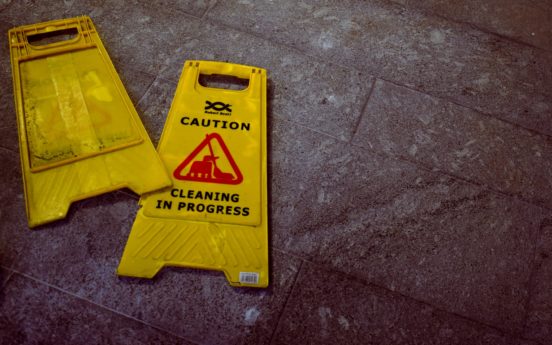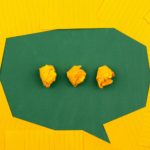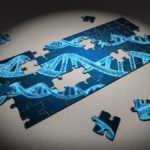If not for this master’s program I may not have ever had the epistemological language to describe my teaching philosophy or experience with learners. Though I digested many edubooks on pedagogy, I can remember none that mentioned a learning theory behind their guidance, nor spent time outlining frameworks of epistemology that could move an educator forward in thinking. Likewise, there have been no discussions of epistemology in the multitude of professional development sessions or staff meetings I have attended. In the readings and discussions on learning theory in my coursework I have come to see that constructivism (arguably social constructivism) most closely resembles my experiences in the classroom and what I try to achieve as an educator – I attempt to create an environment that gives students control in their learning with opportunity to discuss and collaborate in order to actively construct that learning. This involves opportunities for dialogue, experiential learning, group work and reflection. And as my school moved to “BYOD” in 2017 (each student is required to have a laptop or comparable device with them for all courses), a mandate to make use of said technology led to a push to both digitize course content and to create a technology-infused constructivist environment for our learners.
In The World Is Open: How Web Technology Is Revolutionizing Education, Curtis Bonk (2009) mentions that current trends in technological incorporation in the classroom open learners to an ever enlarging and ubiquitous “Web of Learning” (p.29) that demands “instructional approaches that are more active and engaging and in which learners have greater control over their own learning.” (p.33) From my attempts to create a constructivist learning environment utilizing this Web of Learning and my recent research into the parameters that make such a setting successful, I have found that giving students greater control of their learning – either blended, fully online (as with our current remote learning setting), or in f2f settings – requires strong self-regulated learning (SRL) skills. While there are various models of SRL, there is agreement among models that the process is recursive and generally involves goal setting and planning, performance, and reflection. SRL skills are vital for students in making sense of content and not every student that is being thrust into these emerging digitalized learning environments are equipped to handle it.
In a thorough comparison of the provincial K-12 education trends and issues regarding digital technologies in blended and online learning, Blomgren (2017) references a study from 2009 in stating that “being young does not necessarily equate to adequate competency in the learning use of digital tools” (P.85). This reference moves beyond just general technology skills – something the author notes have historically, and drastically been over-estimated to exist among the current student population – and includes those SRL skills that make independent learning in a digitalized environment possible. Unlike BC, which has recently undergone an arguably radical curriculum redesign that incorporates, at least implicitly, aspects of both constructivism and SRL skills, Manitoba is stuck with a curriculum document* that is not only badly outdated (when compared against the pace of technological incorporation), but also decidedly cumbersome.
*In this investigation the Grade 9 Science curriculum was used as an example
The bulk of the curriculum (Senior 1 Science, 2000) consists of three interconnected but separate learning outcome lists:
- General Learning Outcomes (GLOs): covering five ideas around scientific literacy
- Specific Learning Outcomes (SLOs):
- Cluster 0: nine categories covering overall skills and attitudes in science
- Clusters 1-4: content-specific learning outcomes
While there is an attempt to show how these three categories of outcomes fit together, a teacher attempting to decipher their curricular obligations is likely to focus their attention on Cluster 1-4, as the document describes only these as the “mandatory component” (p.3.6) of the curriculum. There are 64 uses of the word “technology” in the curriculum, but only in the cursory sense of a connection between the fields of technology and science, and never as explicit instruction for its use. Additionally, the background information contains no mention of learning theory or epistemological label to guide the reader. If you are looking for it, there is vague connection to both constructivism and SRL skills as it notes the goal that “students must increasingly become engaged in the planning, development, and evaluation of their own learning experiences.” (p.1.3)
To muddle the situation, in an entirely different location than the curriculum, there exists a lesser known and equally important website called Literacy with ICT (LwICT), which exists as “A Model for 21st Century Learning from K-12.” (Literacy with ICT, n.d.) The site contains a continuum document and information, laid out over several linking pages, that suggests it is an ancillary or accompanying framework to overlay (or perhaps underlay) the instruction of the curricula. This website is meant to encourage and outline the infusion of technology into student learning to support critical thinking, creativity, and reflection. Interestingly, under the Supporting Principles section of the site, there is explicit mention of constructivist learning as a foundation to the continuum, and the site contains many references to SRL skills like “plan,” “produce” and “reflect.”
It is not enough to have curriculum make implicit connection to technology use or SRL skills and their requirement for deep learning. Ewijk & Werf, in a 2012 study of teacher beliefs and behaviour of SRL note that “(a)lthough teachers consider SRL as important, most of them do not integrate strategy instruction into their teaching.” (p. 8) Educators likely lack experience, confidence, or exposure to both the technology and SRL skills necessary to instruct in an increasingly digitized, independent learning environment. And although the provincial intent may be somewhat clear, with the convoluted nature of this website and the curriculum, I cannot blame educators who struggle to create the desired technology-infused constructivist environment. Manitoba desperately needs a new and simplified curriculum that explicitly outlines constructivist principles with technology, and the SRL skills necessary for students to navigate and make meaning from the content independently and/or collaboratively.
Photo by Oliver Hale on UnSplash
References
Blomgren, C. (2017). Current Trends and Perspectives in the K-12 Canadian Blended and Online Classroom. In N. Ostashewski, J. Howell, & M. Cleveland-Innes (Eds.), Optimizing K-12 Education through Online and Blended Learning. Information Science Reference. DOI: 10.4018/978-1-5225-0507-5
Bonk, C. J. (2009). The World Is Open: How Web Technology Is Revolutionizing Education. Hoboken, UNITED STATES: John Wiley & Sons, Incorporated. Retrieved from http://ebookcentral.proquest.com/lib/uvic/detail.action?docID=448869
Ewijk, C. D., & Werf, G. van der. (2012). What Teachers Think about Self-Regulated Learning: Investigating Teacher Beliefs and Teacher Behavior of Enhancing Students’ Self-Regulation. Education Research International, 2012. https://doi.org/10.1155/2012/741713
Literacy with ICT | A Model for 21st Century Learning. (n.d.). Retrieved July 16, 2020, from https://www.edu.gov.mb.ca/k12/tech/lict/index.html
Senior 1 Science | Manitoba Education. (2000). Retrieved July 17, 2020, from https://www.edu.gov.mb.ca/k12/cur/science/outcomes/s1/index.html






